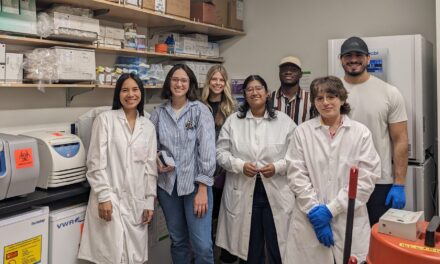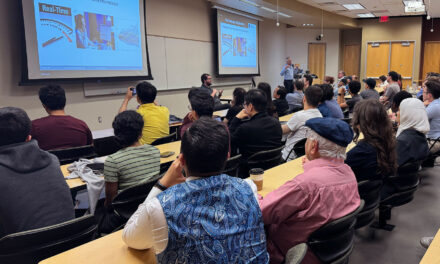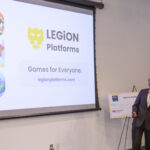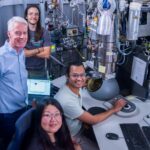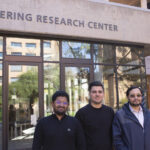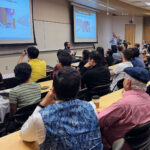
ASU technology spinoff licenses new memory technology
October 6, 2004
An ASU technology spinoff company, Axon Technologies Corp., has reached a significant new agreement to license its nanoscale Programmable Metallization Cell (PMC) nonvolatile memory technology to industry giant Infineon Technologies.
Infineon, the third largest memory supplier and fifth-largest semiconductor manufacturer in the world, follows Micron Technology Inc. as the second major manufacturer to obtain a non-exclusive license for the advanced memory and switching technology from Axon.
“The Infineon license comes after an extremely thorough evaluation that extended over two years,” says Dr. Michael Kozicki, professor of electrical engineering at ASU’s Center for Solid State Electronics Research, founder of Axon and inventor of the technology.
Demand for new memory technologies is the result of an explosive growth market of everyday portable devices, such as cell phones, digital cameras, PDAs and MP3 players. In these battery-operated devices, squeezing out maximum performance while consuming the lowest amount of power remains a top priority.
PMC technology shows promise as a next-generation memory that offers superior performance and power savings and is flexible enough to be configured for a large number of different applications and devices.
Additionally, with “Moore’s Law” — the doubling every 18 months in the number of transistors on a chip that pushes the building blocks of microcircuits to smaller and smaller dimensions — conventional computer memory will one day reach a point where it becomes difficult to make and use.
“The problem is, you can make smaller and smaller transistors, but as you shrink memory, the ability of that memory to store the information goes down,” Kozicki says. “It’s like trying to store the information in a little bucket that’s getting smaller and smaller with time. Pretty soon you have a bucket that’s too small to hold anything reliably.”
The breakthrough with PMC technology comes from its nanoscale size.
“Existing memory doesn’t scale very well; you can’t go on shrinking it,” Kozicki says, “whereas PMC is a memory that loves to be scaled because it is actually based on a nanostructured material. In other words, it’s a material that has a particular structure at a nanometer level.”
PMC works on an atomic scale. In the technology, a silver or copper layer and an inert electrode are formed in contact with positively charged silver or copper ions contained in a solid state, electrolyte film, creating a device in which information is stored by removing the positive charge, or reduction, of the metal ions.
“The ions move, and they actually become reduced to form this little metal nanowire,” Kozicki says. “The nanowire is a true nanostructure, about the size of a virus. But, even being so small, it creates a huge electrical change but requires absurdly small amounts of energy — the lowest amount of energy of any memory proposed or in existence at the moment.”
Key attributes of PMC are low voltage, low power consumption and the ability for the storage cells to be physically scaled to a few tens of nanometers.
“Being nanostructured, and creating a nanowire the size of a virus at very low voltage and very low current, means you can cram a lot of these things in a very small area,” Kozicki says. “You can keep on the ‘ Moore’s Law’ scaling path.”
The storage of the new memory is very stable, beyond 10 years, so it can be used in today’s digital cameras, digital music and video. But it also can be easily reversed to erase the information at the user’s command.
PMC technology also is able to be easily integrated into semiconductor manufacturing methods for computer chips.
“We’re not disposing of the 30 years of silicon transistor development,” Kozicki says. “We are using it and essentially add our secret sauce to the existing technology to give it new capabilities.”
The strategic licensing agreements allow Kozicki to leverage the development of the technology across both companies. The Micron license allows a company that focuses solely on memory to pour its resources into the development of PMC for a range of applications that includes portable devices, while Infineon has the memory and semiconductor manufacturing capabilities to apply PMC across memory systems and to embed it into technologies such as computers, smart appliances and sensors.
Kozicki notes that several other companies have expressed an interest in PMC technology for a range of embedded applications.
Kozicki will present research results on PMC at the upcoming Non-Volatile Memory Technology Symposium, to take place in Orlando, Fla., on Nov. 15-17. The annual conference brings together leading researchers, innovative technologists and investment stakeholders in the field of memory development.



